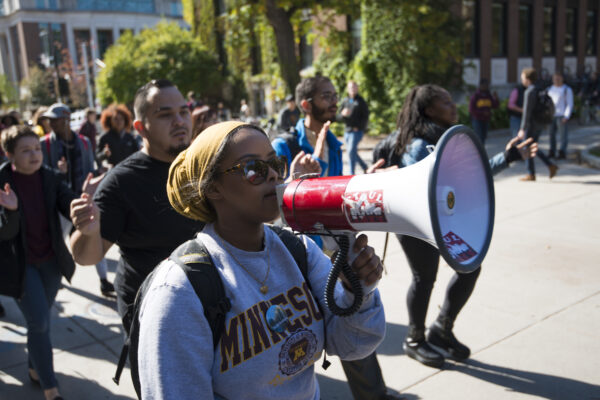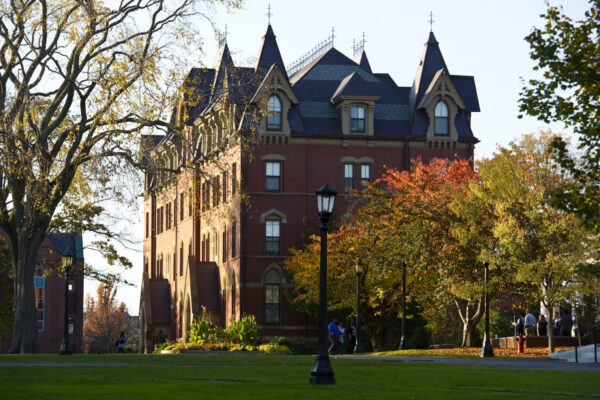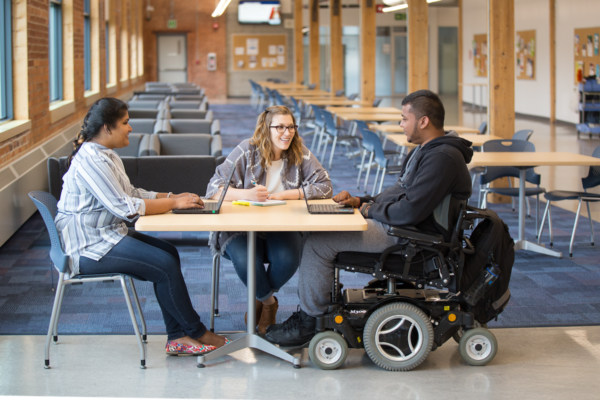Finding Common Ground: Campus Inclusion and Free Speech
By Jennifer Crandall
Free speech is playing out in new ways on American campuses, which some argue is leading to the corrosion of higher education as a marketplace of ideas. PEN America’s recent report, And Campus for All, framed a March 13th panel session at ACE2017 moderated by ACE’s Lorelle L. Espinosa on the tension between free expression and inclusion on American campuses. Perception among some individuals leans toward having one or the other, when in fact, colleges and universities need to have free expression in order to have inclusion. However, Institutions do need to evolve to be responsive to the needs of its changing student population.
Findings from two independent surveys of undergraduates (Knight Foundation and Yale) found that over 50 percent of undergraduates believe that offensive speech should be silenced on campus. To panelist Catherine J. Ross, professor of law at The George Washington University (DC), this suggests that students have not been introduced to the meaning and legal requirements of free speech. Neither the government nor government-supported public colleges and universities can prohibit speech based on its message, ideas, subject matter or content. Its application preserves a physically safe campus; it does not guarantee one’s emotional safety.
According to the two student panelists, Storm Ervin and Cameron Okeke, their undergraduate institutions and the First Amendment were not created with them in mind. Attention needs to be paid to the consequences of harmful speech when a physically safe campus turns into an emotionally unsafe place where students themselves are the target of hate speech.
That students of color are demanding safe spaces, one audience member observed, suggests that millennials believe higher education should be beyond the microaggressions they believe they experience due to First Amendment protections.
“Somehow,” Okeke shared, “we got the impression that diversity and inclusion are important and matter and internalized what college and university will be like…that part of that package is safety. It isn’t a demand, it is an expectation, and I assume my institution will support me in that way.”
“The essence of the balance we try to strike,” said panelist Suzanne Nossel, executive director of PEN America, “is enabling the widest possible range of speech, but not allowing that to crossover to be menacing.”
Panelists provided the following action items for higher education leaders in balancing campus inclusion and free speech:
- Ensure students of all backgrounds and orientations recognize the connection between the First Amendment and getting a postsecondary education and advocating for causes they believe in. Students need to know that colleges and universities are places for dissent and discord.
- Label speech that is not representative of institutional values. This is a complicated role for college and university presidents, but they can protect speech rights while creating or maintaining a community representative of its values. For recent examples demonstrating this, see the University of West Virginia and Texas A&M University.
- Encourage bystander speech as a way to combat toxic speech. People who are not targets of hateful speech also need to shoulder responsibility for speaking out against speech misaligned with institutional values. People may pay more attention to a bystander than a targeted individual or population.
- Offer a cultural competency course for students, faculty and staff. Such a course should speak to intersectionality and power dynamics. While hate speech is fueled by ignorance and enables (harmful) action, becoming more culturally competent might lead to greater sympathy.
- Create intentional safe spaces for marginalized or minority students. For some, humanity is affirmed in a safe space where students can engage candidly with peers around race, gender, orientation, etc., a difficult feat in a traditional classroom environment.
- Recognize that social media is a double-edged sword. It can complement safe spaces and help marginalized students navigate the institution. The anonymity of some social media, however, can be weapons for assailing others. Admittedly, how to handle social media is a new space and challenge for higher education.
- Support students who speak up against harmful speech. Exercising this right deserves attention. Administrators need to listen to and take student concerns seriously.
- Engage with students. Ask marginalized and diverse students what they need and encourage them to voice their opinions. Students need to know that they have a right to educate people and use their voices in powerful, beneficial ways.
Nossel capped off the session with a call for colleges and universities to be ambidextrous in understanding conflicts over speech. Higher education has the dual role of creating physically safe campuses where emotional safety is regulated, yet remaining open to a vast marketplace of ideas that embody certain values—not an easy balance in this polarized milieu.
If you have any questions or comments about this blog post, please contact us.


